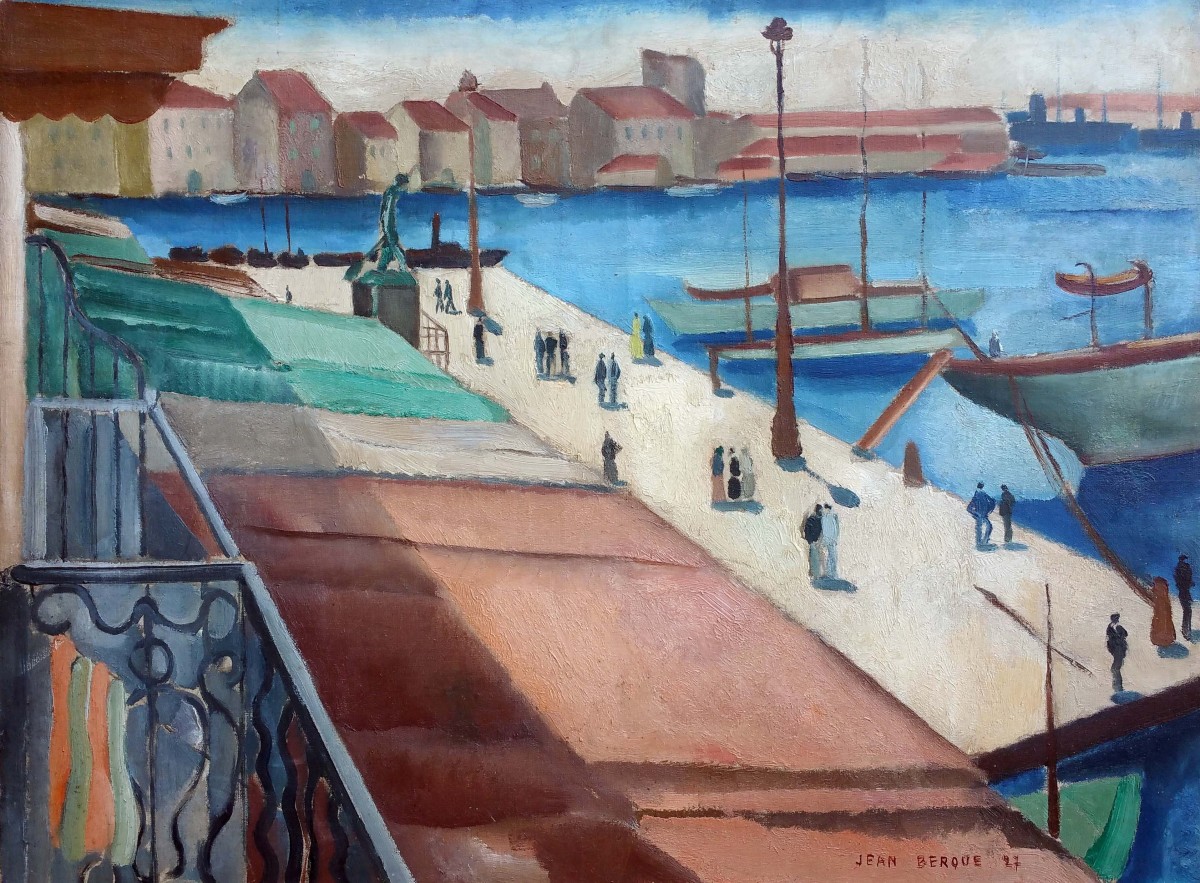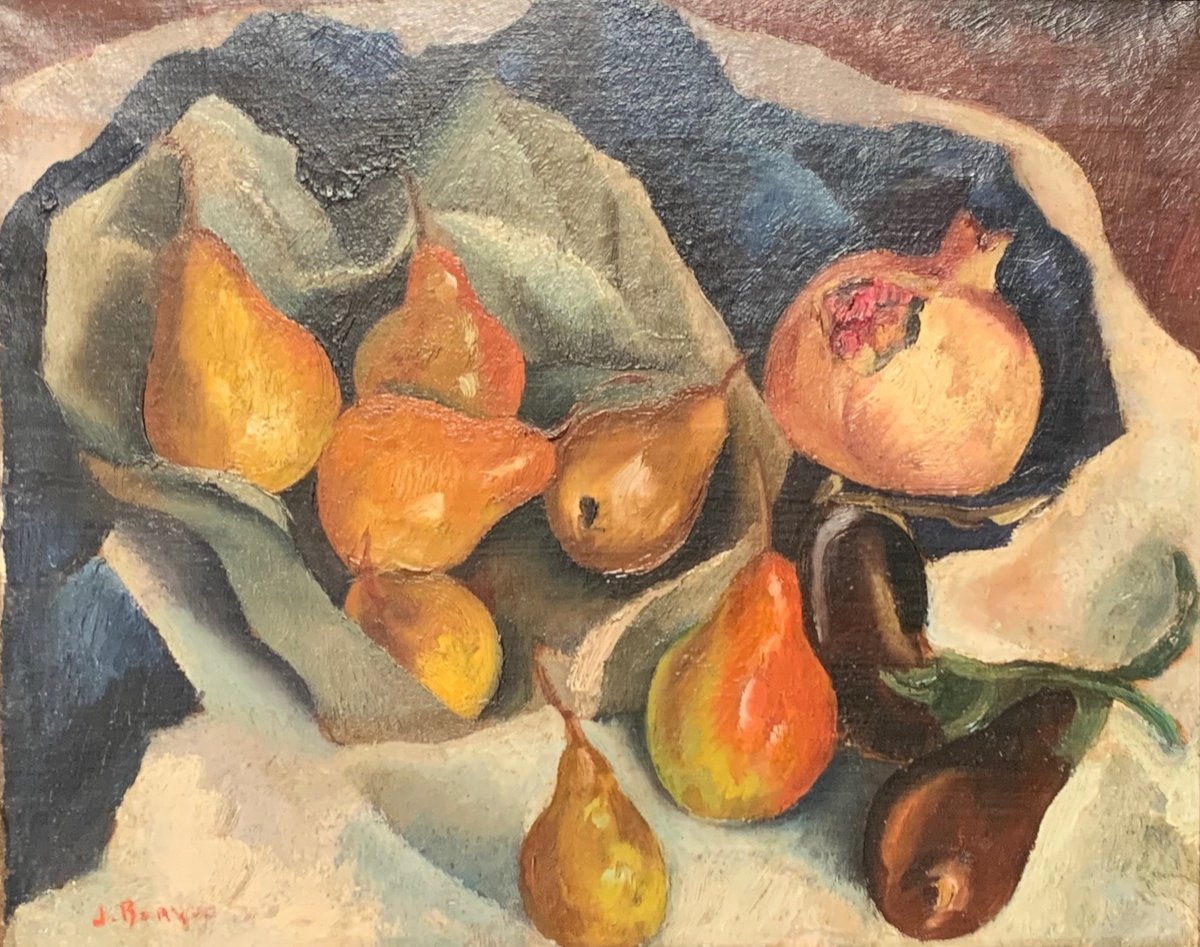
Jean Berque (1896-1954) was a French artist of note, whose work has sadly been somewhat neglected since his death, although he produced paintings and illustrative work from the 1920s until his death in 1954. The art deco style of the period is often evident in his work. He became particularly productive as an illustrator for books, illustrating the works of distinguished writers, including Collette, Pierre Louys, Pierre Ronsard, Baudelaire, Paul Verlaine and Shelley.

Berque was born in Reims in 1896 to a family interested in the arts. With their encouragement, in 1916 he moved to Paris to enrol in the Académie Ranson where he was taught by the notable post-Impressionists Félix Valloton, Maurice Denis and Paul Sérusier. His enlistment soon afterwards was quite short, as he was discharged from military service in 1917 on health grounds- something that may well have preserved his life and his talent given the vicious trench fighting of the war at this stage.

In 1922 Berque became a member of The Union of Decorative Arts in Reims. In 1923-24 the unique church of Saint-Nicaise was built in that city by Jacques Marcel Aubertin, having been commissioned to do so by the industrialist, Georges Charbonneaux. This was a period of resurgence in the production of religious art and this church was decorated with a marked Art Deco style. Gustave Jaulmes and Maurice Denis were entrusted with the fine art decorations whilst the jeweller René Lalique created the windows. Amongst other artists involved, Jean Berque produced a Madonna and Child and in 1925, a series of Stations of the Cross (see below). He had already travelled in Italy to be able to study the Renaissance religious art.

In early 1924, Berque contributed to the first group exhibition to be held at the Eugène Druet Gallery in Paris, alongside major names such as Valotton, Sérusier, Aristide Maillol, Henri Labasque, and others. He continued to exhibit regularly, painting figures, still lifes and landscapes (note the Moroccan market scene, an orientalist canvas typical of colonial France in the interwar period- see Paul-Emile Becat and Berthomme Saint-Andre previously). Berque particularly gained a reputation for his nudes- especially when, in 1927, a nude image of his illustrating the cover of the satirical review Crapouillot was banned from the Paris news-stands.

This ban may have served as good publicity for Berque, as he was soon very busy with illustration work, receiving frequent commissions during the 1930s from the publisher Philippe Gonin in Paris and from the Gonin Brothers in Lausanne. Nevertheless, Berque also designed adverts for Perrier and theatrical designs for la Comédie francaise.

In 1942 Berque illustrated ‘Amours de Marie’ by Ronsard and thereafter continued to work on erotic texts- generally the more literary ones such as The Song of Songs and Collette’s 1923 Le Blé en herbe in 1946, a commission that was of particular note because the author especially liked his illustrations. He was also by no means averse to working for private press erotic publications. Berque’s drawings for the erotic works of Pierre Louys are prominent amongst these, such as the 1945 edition of the novella Trois filles de leur mère which did not shy away from the more controversial aspects of the text: the incidents of bestiality, lesbian incest, sodomy and underage sexuality that still make the book highly controversial today were all explicitly depicted. Berque also worked on Louys’ Douze Douzaine Dialogues in 1943, making it strong lesbian content very apparent. In 1935, Berque worked on an edition of Louys’ Chansons de Bilitis, a version entitled Les Chansons Secrete de Bilitis. His twelve watercolour plates are lively complements to the text, especially the scene of maenads celebrating Dionysos and Astarte/ Aphrodite seen below.

Berque was very much like other artists I have described here: he had a career in fine art and worked in a variety of styles, from orientalist landscapes and genre scenes to modernist portraits, but he was not adverse to more commercial ventures and felt no apparent discomfort designing highly erotic material as well as being known for his religious works. These may seem to suggest that he would have experienced personal and aesthetic conflicts, but I do not think that we should probably not seek to infer very much about the character of most of these individuals, other than to recognise that- especially during wartime- they needed to take work when it was offered.
For more discussion of subjects covered here, see my book In the Garden of Aphrodite and also refer to my Pierre Louys bibliography.

[…] for instance, Paul-Albert Laurens, Leda & the Swan, 1898, Louis Berthomme-Saint Andre, Jean Berque, Marcel Vertes and Georges Pichard for Trois filles, by Rojan for an edition of Louys’ Poésies […]
LikeLike
[…] have discussed elsewhere, by Edouard Chimot (1925), prolific book illustrator Willy Pogany (1926), Jean Berque (1935), Lobel-Riche (1937) and Paul-Emile Becat (1938). A further six followed between 1946 and […]
LikeLike
[…] the end of the Second World War, further editions of Trois Filles followed: Jean Berque provided sixteen plates for an issue in 1955 and, late that same year, Edouard Chimot also […]
LikeLike
[…] design work (as well as illustrating works by Louys) were Nathan Iasevich Altman and Jean Berque (Bilitis, 1932 and 1935 respectively), Pierre Bonnard (Crepuscule des nymphes, 1946), André […]
LikeLike